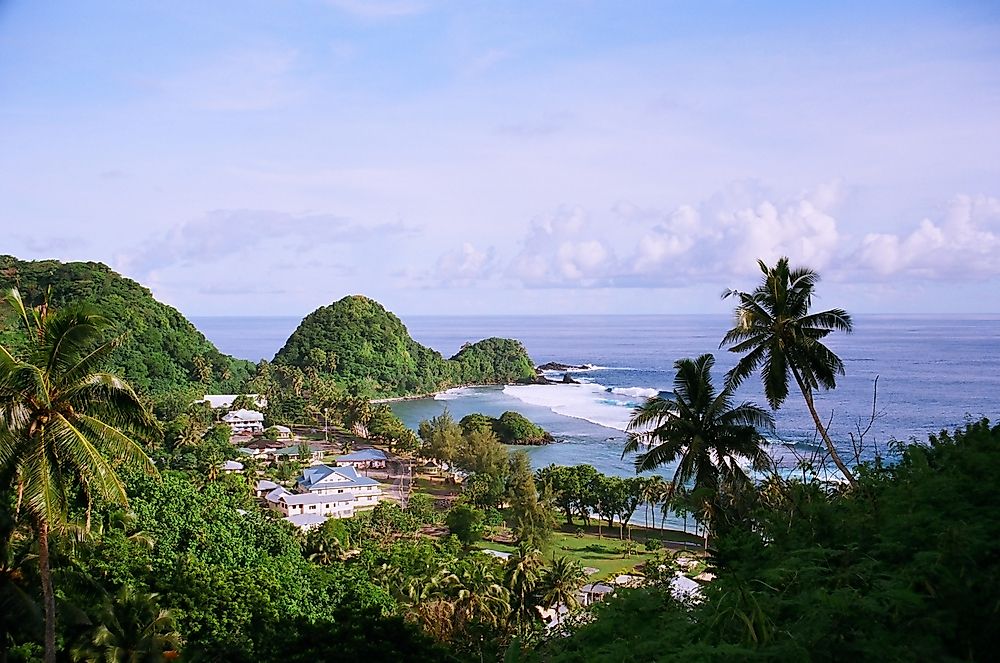What Are The Biggest Industries In Samoa?

Samoa is an island country consisting of two main islands (Upolu and Savai’i) and four other smaller islands (Apolima, Manono, Namua, and Fanuatapu). The Samoan Islands was discovered by the Lapita people about 3,500 years ago. They settled there and subsequently developed the Samoan language and culture. Samoa has a total area of approximately 1,097 square miles and lies halfway between New Zealand and Hawaii, in the Polynesian region of the Pacific Ocean. The two main islands of Upolu and Savai’i accounts for 99% of the total land area. The island of Upolu is home to over 75% of the population and also hosts the capital city (Apia).
Overview of the Economy of Samoa
Samoa has been classified as an economically developing country by the United Nation. In 2017, Samoa’s GDP in PPP was estimated to be US$ 1.13 billion, ranking it 204th. The service sector accounted for 66% of the GDP while agriculture and industry accounted for 10.4% and 23.6% respectively. The economy is mainly dependent on agricultural export and foreign private financing. Agriculture is the largest employer, accounting for about two-thirds of the total workforce and about 10% of the total export. Tourism is a rapidly growing sector with over 120,000 tourists visiting the country in 2014. Samoa receives a significant amount of financing from abroad. The direct remittance amounts to about US$ 12.1 million annually while the annual official development assistance is about US$ 28 million. Samoa is vulnerable to natural disasters such as storms and tsunamis which may disrupt transportation and power generation.
Agriculture
Agriculture is a vital part of the Samoan economy, contributing directly and indirectly to about two-fifths of the country’s total GDP and accounts for two-thirds of the total labor force. Although agriculture is central to the life of the Samoans, the environment and natural disasters make it more difficult for the citizens to participate in the industry. Apart from overseas remittance, agriculture is the largest source of export earnings, accounting for about 9% of the export. The sector is also the major source of raw material for the manufacturing industry in Samoa. Of the total land area, about 24.4% is under permanent crops and another 21% is considered arable land. Because of the variation in latitude, a wide range of tropical and subtropical crops can be grown in the country. The staple crops include banana, cocoa beans, and copra. Samoa produces 13,000-15,000 metric tons of both copra and banana. Other crops produced include sugarcane, pineapple, and taro. In the 1980s, Samoa was one of the largest exporters of taro. However, the crop was destroyed by taro blight and only began recovering in the late 1990s. In recent years, the government and international aid donors have advocated for agricultural diversification, with farmers encouraged to plant at least two crops.
Fishing
Fish and fishing are economically and socially important to the citizens of Samoa. Fishery products are important sources of food and export goods. About 25% of the households in Samoa draw their income from fishing. Fish is an important part of the Samoan diet. The fishing industry can be placed in six categories, namely coastal commercial, coastal subsistence, offshore (locally based), offshore (foreign-based), freshwater, and aquaculture. The main fishery landing site in Samoa is Apia, accounting for almost 50% of the total landing. Other landing sites include Salelologa and Apolima-Uta. None of the foreign catches land in Samoa. According to the recent reports, Samoa records an average 12,500 tons of catches annually. The catch from offshore fisheries such as tuna is mainly for export while the catch from coastal commercial fisheries is mainly for local consumption. According to FAO, the per capita fish consumption is Samoa is 50.5 kg, translating to the demand of 9,898 tons.
Tourism
The islands of Samoa feature distinct landscape from volcanic landscape and tropical rainforest to sandy beaches and crystal clear lagoon. The tourism industry is an important and major contributor to the economy of Samoa and a source of livelihood to the local people. The industry is worth $SAT 340 million and accounts for approximately 20% of the GDP. The total number of tourists to Samoa rose from 135,000 in 2012 to 139,000 in 2015. The majority of the tourists come from the EU, the US, and the Pacific countries. Samoans living abroad also accounts for a large number of tourists, especially during holiday seasons like Christmas. The country has a vision of having a growing tourism industry which engages its visitors and recognized as the leading destination in the Pacific. The tourism sector has the potential to grow and support sustainable development through employment and income generation.
Manufacturing
The manufacturing sector is a key player in the industrial development and economic growth of Samoa. The sector accounts for approximately 10% of the country’s total GDP and employs about 6% of the total workforce. The main manufacturing industry includes food and beverage processing and automotive wire processing. The largest manufacturing company is Yazaki Samoa which processes automotive wire harnesses for export. The Yazaki plant accounts for 20% of the manufacturing sector and employs over 2,000 workers. Its net revenue amounts to US$ 3 million annually.











